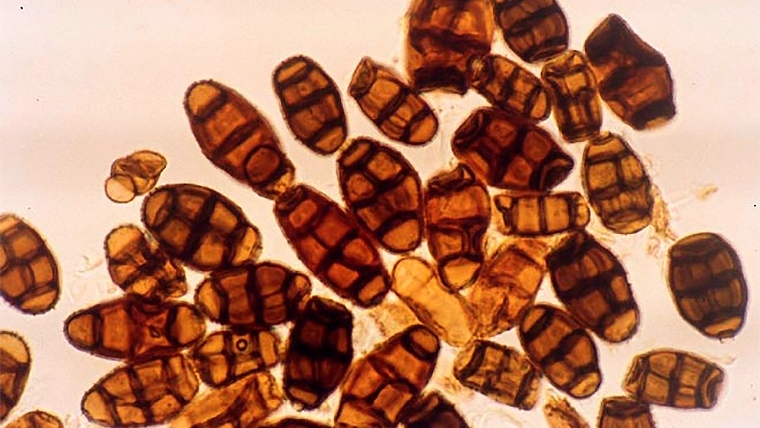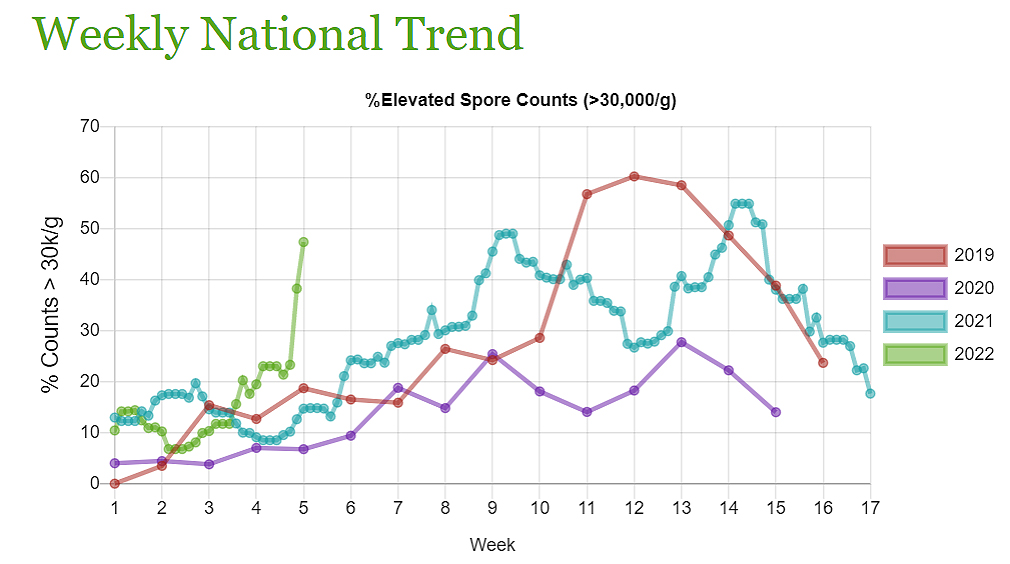
Climate or at least the weather is once again hogging the limelight. It seems to have divided the country into two halves.
The North Island having high humidity with reduced rainfall while in the South rainfall is persisting down especially on the West Coast, although the eastern side has also been receiving its fair share.
While penning this, Buller has been put under a state of emergency with heavy rain continuing to fall. On the east side, farmers who invested in expensive irrigation systems will be wondering why they bothered. However, given the precarious and unpredictable nature of the weather, no doubt there will be a time again when is proves its worth. At least all the South Island hydro and irrigation dams will be full.
Given the high humidity especially in the top half of the of the North Island, I took a look at how the facial-eczema spore counts were going. This disease has to be one of the worst animals can have inflicted upon them.
Fortunately, in the last couple of decades animal breeders have made considerable genetic progress breeding animals who can tolerate the high spore counts that can occur in years like this. However, the way the trend is going they are going to be tested this season. The graph below clearly indicates that that counts for this year are heading up into recent record territory and the recent rains will be doing nothing to reduce this.

Source: https://labportal.gribbles.co.nz/#/public/facial-eczema
At this stage while the South Island is creeping up, at the moment levels are not a major concern and still below the >30,000/g. Most likely spores are getting washed away.
HWEN meetings underway
The “He Waka Eke Noa’ (climate change) meetings have begun to take place, at this stage the Waikato and Bay of Plenty meetings have or are being held. Looking at the DairyNZ online site some meetings over two weeks out are getting booked out, no doubt in part due to numbers being kept at a maximum 100 attendees under “red light rules”. This is farmers best opportunity to have a say and provide some input into how the proposals are developed. It is worth noting if farmers cannot get to the meetings or feel they have not been able to fully convey their concerns or otherwise can forward submissions online input via this link. Complaining after the event will just frustrate the process and could result in the government default programme being foisted upon the industries.
Cross species risks
Switching to Covid concerns, it was an eyebrow raising moment hearing that 30% of deer tested (130 animals) on Staten Island New York state all tested positive with the Omicron variant of Covid -19. This is not a new occurrence with other states reporting Covid infections in deer since 2020 and many other animal species also being infected. Scientists are concerned as more animals are infected it may yet again mutate and reinfect humans.
To date there has been no reported incidences of humans catching it from animals, although that ignores where the initial outbreak came from.
I also heard that some farmers are suggesting that not reporting Omicron infections is a possible route they would follow as to report could end up shutting down their farming systems with no obvious route to get additional support. The fact that ruminants among other animals appear to be prone to the virus could make this action (or inaction) risky as having animal ‘handlers’ with positive covid-19 may end up with a large domestic animal reservoir. Based upon responses of people (USA) who have had pets infected the illness appears to only exhibit milder symptoms.
The march of the pines
Finally, (compliments of Colliers Realestate) an Overseas Investment Office spokesperson says the Treasury is poised to review the current carbon trading process. Four major pieces of work are underway that will impact the rural sphere.
- A review of the process overseas investors undertake when purchasing farms to convert to forestry
- Considering whether only native forestry should be allowed into the Permanent Forest Category of the ETS, effective from 1st January 2023
- Determination of the sequestration rates of certain native species to better calculate their carbon returns
- Changes to the National Environmental Standard on Plantation Forestry, giving local councils the right to plan where trees should and should not be planted
What does this leave Kiwi farmers? With:
- Anxiety over policies which might blanket hillsides in pines
- Worries over a rush to convert sheep and beef farms, encouraged by the previous coalition government’s One Billion Trees Programme
- Possible recurring environmental problems with slash, such as those that have plagued Tolaga Bay
- Concern over the depopulation of rural communities and loss of local services
While a forestry industry member in response to an earlier article expressing concern over “overseas owners buying up land for permanent carbon farming” felt there was not a major problem the evidence, although mostly anecdotal, is that it is. The upcoming sales of Huiarua and Mata Stations on the inland East Coast with a combined area of 6,000 ha’s has certainly raised concerns on the East Coast /Gisborne region.

We welcome your comments below. If you are not already registered, please register to comment.
Remember we welcome robust, respectful and insightful debate. We don't welcome abusive or defamatory comments and will de-register those repeatedly making such comments. Our current comment policy is here.